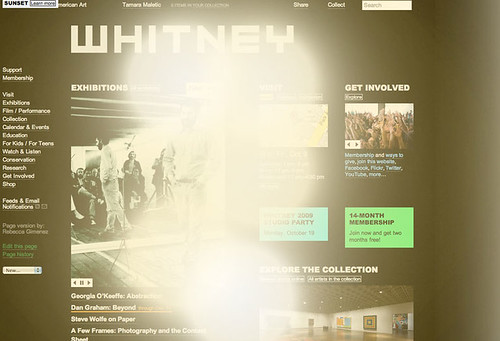Starting today, a digital-environmental artwork created by Colgate professor Cary Peppermint will “interrupt” the website of the prestigious Whitney Museum of American Art in New York City.
But you need to click fast and at the right time, because the project appears for 30 seconds twice each day – at sunrise and at sunset.
Peppermint’s piece, titled Untitled Landscape #5, will take over the Whitney homepage at those times with fluctuating orbs of light.
The size and movement of the orbs are based on traffic to the website in the past 12 hours; more “hits” on the site will result in bigger and slower moving orbs.
 |
| This digital-environmental artwork by Cary Peppermint is called Untitled Landscape #5. |
“I wanted to treat the Whitney website itself as a landscape and use my artwork to explore the impact visitors have on this digital environment,” said Peppermint, an assistant professor of art and art history.
Peppermint was commissioned to do the project by Christiane Paul, adjunct curator of new media arts at the Whitney.
Paul had seen Peppermint’s Eclipse project, which he did for Turbulence.org. That project is a user-driven artwork-application that alters photographs of United States national and state parks based on real-time Air Quality Index (particle pollution) data.
Peppermint is keenly interested in creating digital environmental art that explores relationships between landscape, technology, and culture.
A lot of his work is through EcoArtTech, a collaborative platform with Leila Christine Nadir. They both received artist fellowships this year from the New York Foundation for the Arts.
His Whitney website project will run for about three months. The museum’s website will have a link that explains the project and the viewing times, as well. (For today, sunset in New York City will be at 4:41 p.m.)
Next up for Peppermint and EcoArtTech is a project called Fluid Frontier, which is a series of performances and web-based information about water issues near the University of North Texas, where they are conducting short residences at the university’s College of Visual Arts and Design.